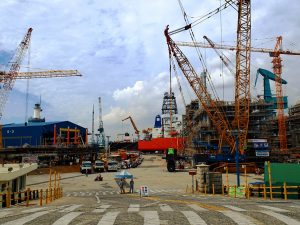With Donald Trump’s victory in the U.S. presidential election, a new chapter of international relations begins. One of his signature statecraft moves, trading intangibles for tangibles, will present conundrums for South Korea, especially regarding the future of the United States Forces Korea (USFK) and the defense burden-sharing negotiations amid Trump’s renewed focus on isolationist, “America First,” and cost-effective foreign policies.
Although the actual amount fluctuates, the cost of stationing U.S. troops in Korea, according to the Government Accountability Office, was $13.4 billion from 2016 to 2019. That equates to an average of $3.5 billion per year, with South Korea kicking in approximately $1 billion in burden-sharing payments. The first Trump administration questioned the $2 billion deficit, in keeping with its habit of downplaying the intangible worth of overseas allies such as South Korea and Japan – two crucial players in maintaining regional stability and counterbalancing China and North Korea. Many experts predict Trump 2.0 will not digress from this stance. During a campaign speech, Trump bashed the South Korea-U.S. burden-sharing arrangement, naming Seoul a “money machine” capable of paying $10 billion a year – 10 times the current contribution.
In his first term, Trump used the threat of USFK withdrawal as leverage in burden-sharing negotiations. However, in 2025, such an action could prove disastrous, as it might send the wrong signal to Kim Jong Un and his regime. North Korea is armed with nuclear weapons and has 1 million active soldiers. Even a very conservative estimate assesses that another Korean War could cost the United States $2 trillion, a price many times higher than the cost of maintaining a robust USFK with South Korea’s contributions. Many analysts also argue that if the United States’ East Asian allies were to fall, authoritarian nations China and Russia would have access to the western Pacific Ocean any time, which poses an unprecedented existential threat.
While U.S. withdrawal from Korea is an option, it would likely deal a final blow to the United States’ already waning commitment to uphold the liberal international order. The “hub and spokes” bilateral alliance system would gradually, yet inevitably, erode, with Washington’s promise to defend the liberal order and like-minded nations from harm increasingly viewed as a bounced check.
Previous U.S. administrations’ agreements with South Korea on partial defense cost coverage underscore that such “intangible” factors have long been part of the equation. The question is whether the Trump administration will factor such considerations into its own deal-making.
Seoul made hurried efforts to finalize a five-year renewal of the burden-sharing agreement just weeks before the 2024 U.S. presidential election. The new plan requires Seoul to increase its contribution to $1.47 billion in the first year (up by 8.3 percent from the current $1.2 billion) to support the USFK and associated logistics. While the deal is valid for five years, Trump retains the authority to initiate renegotiations of both foreign treaties and executive orders.
That said, the security landscape has undergone drastic changes since Trump was last in office. While China is rapidly putting out new warships to assert dominance in the South China Sea and Eastern China Sea, the United States Navy (USN) is finding it difficult to match the number due to the extreme decline of the U.S. shipbuilding industry. Although still proficient at producing state-of-the-art naval vessels, Washington no longer has a broader civilian shipbuilding ecosystem, producing only 0.2 percent of the world’s tonnage. Against this backdrop, the U.S. has already sought support from South Korea and Japan, the world’s second and third maritime industry powers, respectively. Although by law the USN cannot purchase vessels from its allies, it can have its warships overhauled and repaired at South Korean and Japanese dockyards. Hanwha, a Korean defense conglomerate, recently signed a contract with the USN for a maintenance, repair, and overhaul (MRO) deal expected to exceed $60 billion annually.
Trump is aware of this. During a congratulatory call with President Yoon Suk-yeol on November 7 (Korean time), President-elect Trump emphasized the importance of the South Korea-U.S. alliance and specifically highlighted the capabilities of South Korea’s shipbuilding industry. While it’s premature to draw definitive conclusions at this point, considering Trump’s unpredictable nature, the strategic advantage of repairing and maintaining many USN vessels close to China is a potential bargaining chip for South Korea in future burden-sharing negotiations. The diminished U.S. shipbuilding industry cannot be resuscitated overnight, making the bustling dockyards of Seoul a vital advantage for the USN. Even if the United States had ample facilities, compared with the cross-Pacific route to reach U.S. dockyards, staying within the waters of South Korea and Japan saves much time, fuel, expenditure, and manpower fatigue, allowing the USN to maintain the best combat readiness posture in the Pacific.
Within Washington, regardless of the party affiliation, South Korea’s readiness to serve as a “forward-operating dockyard” is viewed as a significant U.S. national security “asset.” At this juncture, then, there seems to be more flexibility for South Korea to navigate under Trump 2.0 than in his first term. This does not imply that negotiating with him will be easy, but Seoul now possesses more leverage than before. Even if the new defense burden-sharing negotiations bring a high price tag, and even if the two nations at times disagree, the alliance is unlikely to falter.

































